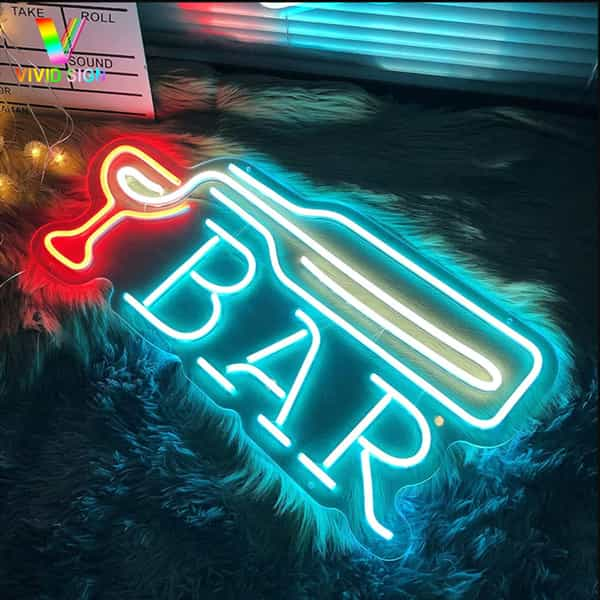In a corner of St Pancras station, Tracey Emin is always turned on. ‘I want my time with you’, a neon sculpture by the artist, has been on show here since 2018. It was part of the ‘annual’ Terrace Wires public arts programme, in which a new work is commissioned every year to hang from the station’s roof; but the pandemic distended time, and Emin’s words have stayed put. Though a new commission was unveiled yesterday, an installation by Shezad Dawood, that hangs on different wires, elsewhere in the terminus.
Assembled from bright pink tubes, and shaped like Emin’s looping script, ‘I want my time with you’ looms over the grand Victorian concourse that sends the Eurostar to the continent. Think of it both as a lover’s declaration and the lament of the voters who wanted their country to Remain. That’s apt: neon was christened ‘new gas’ by the British scientists who discovered it in 1898, but today it trades on nostalgic joys. Shop Sign Donuts

It can make you dream of the Jazz Age – the first neon sign appeared in Paris in 1912, and the form reached the States in 1923 – or the vulgar fun of the 1960s, when Vegas was on the up. (Plenty of English middle-class kitchens display their delusions of being a ‘Dive Bar’ or ‘Motel’.) Yet neon signs have faded away, because they cost too much to maintain compared with backlit plastic or LEDs. They also remind decent people of sex shops and adult cinemas.
But across the UK, many have become local symbols, the datedness of their style just giving them personality. One of London’s best-known neon signs was ‘Lucozade aids recovery’, high above Brentford beside the M4 overpass. Put up in 1954, it survived its original building’s demolition, then a tweak to its phrasing (becoming 'Lucozade replaces lost energy') – in the 1980s, ‘Aids’ ceased to be an innocent verb – before it was finally supplanted, in 2016, by a lifeless digital screen.
In Islington, by contrast, the ‘Hornsey Road Baths & Laundry’ sign has outlived the baths themselves, which closed in 1991: its diving woman and hot red lettering are invitations to vanished fun.
London’s neon epicentre, however, is Soho, the domain of queer life. Here, glowing words sit behind windows but in front of curtains drawn temptingly shut. I used to walk through the area late at night, as the restaurants and bars were closing and their staff were melting away. A secret world emerged from behind the unsparing lights of artisan pasta spots. The neon signs – ‘Easy Diner’; ‘Peep Show’; ‘Girls Girls Girls’ – began to come into their own, paying tribute to acts and actors that were born to go unpoliced.
One day last winter, we were cutting through St James’s – a markedly different area, sombre and silent and grey – when, through the floor-to-ceiling window of Sadie Coles’s gallery, we saw a magnificent neon sculpture of an old cinema façade. It was by Alex Da Corte, and titled 'Red Hot and Very Blue in Technicolor' (2021); inside, you could stand by the work and hear the colours buzz, as electricity flowed through ionised gas. My girlfriend realised that, by coincidence, the sculpture was assembled by a neon workshop near her old flat in Bethnal Green. We used to walk daily past that shop, entranced by its silent cinema; it has all the usual Americana, as well as phrases, and women’s legs.
Wilder still is God’s Own Junkyard, in Walthamstow: the acme of London’s five neon businesses (by the Yellow Pages’s count). As well as giant words and sexual figures, it hums with crosses and fallen angels – neon lends itself, like the Church, to kitsch – and more debauchery in tricolon: ‘Tabs Tats & Tits’, ‘Beer Girls Porn’, ‘Sex Drugs & Bacon Rolls’.
I see no reason that the Emin should ever be taken down. Neon is permanently alluring, because it’s a picture of desire. Where another medium, such as paint, might complicate, the effect of neon is immediate. When it’s an advert, it doesn’t seem like a con, and when it’s an artwork, it’s never quite schmaltz: few people I know can resist the charm of Emin’s piece, a symbol of travel and champagne. (Nor does it matter that it isn’t true neon, but rather lightweight LEDs.)

Happy Birthday Neon Sign Neon words mean what they say: they restore to our harried lives a guilelessness, the rare relief of sincerity. Turn a corner, and see ‘Sex’, or ‘Easy Diner’ – or even ‘I want my time with you’ – and like little else in the modern city, the words will touch your heart.